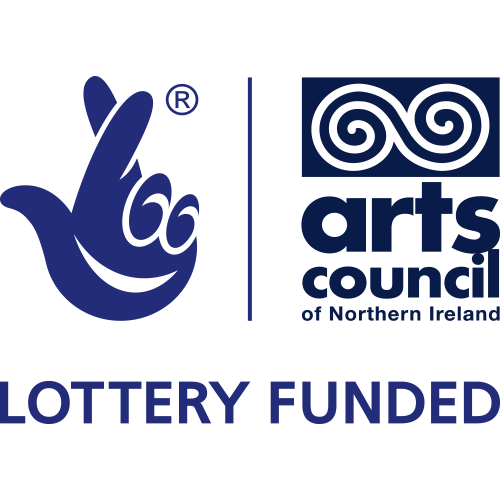Funding
ULSTER-SCOTS BROADCAST FUND APPLICATION CALL
The Ulster-Scots Broadcast Fund (USBF) is seeking digital content projects. The projects should be aimed at supporting learning about aspects of Ulster-Scots such as language, culture and heritage. These projects will be delivered online and may include interactive elements that support active learning and allow users to interact with content. Proposals for projects intended for a range of audiences will be considered. These might include school-based audiences (any Key Stage), children and young people not in a school learning environment and adults of all ages.
Content should be engaging and may include a variety of media, including podcasts.
Proposals for digital productions should be distinctly different from those intended for linear broadcast and producers should consider how the benefits of the digital medium can be maximised. For example, short films could be used as elements of a broader project that includes web-based content that augments the film(s) and can be used to curate the film content.
It is the responsibility of producers to consider (and produce) all elements of a digital project.
As with television content the overarching aim to ensure that the heritage, culture and language of Ulster-Scots are expressed through the project remains. Specific guidance on the type of projects envisaged is detailed below.
WHO CAN APPLY?
Registered independent companies with a permanent agency in Northern Ireland.
The USBF will accept co-production arrangements where the co-producer does not have a permanent agency in Northern Ireland provided the project and the co-production clearly fulfil all of the stated criteria and the project, in the view of the Investment Committee, contributes more significantly to the aims of the USBF than a similar project without the co-production arrangement.
WHAT TYPE OF PROJECTS MAY BE SUPPORTED?
The USBF is looking for digital content projects that will contribute to the promotion and understanding of Ulster-Scots heritage, culture and language.
The USBF is looking for the following type of digital content projects via this call:
- Projects that encourage active learning through engagement that includes elements of interaction.
- The primary objective is to develop content and provide experiences that promote interest in and learning about Ulster-Scots (language, culture, heritage).
- Projects that will appeal to and/or have links with the local Ulster-Scots community and/or the wider Ulster-Scots diaspora abroad.
- Projects intended for school-based audiences will be considered. These projects should help support teachers embed aspects of Ulster-Scots in curriculum-based learning (Northern Ireland Curriculum).
- Digital or online content that has an association with radio or television content.
- Tourism related content.
- Content capable of being hosted on or linked to existing portals or platforms
CHALLENGES
There are 2 key challenges for these types of project. Firstly, the need to explain how a digital content project will reach its target audience. This requires the producer to be explicit about how they propose maximum reach/audience can be achieved. This may involve partnerships with third parties, such as recognised interest groups, local councils or organisations responsible for promoting tourism. The second is to evidence the necessary quality of the project without the benefit of a television broadcaster both ensuring and endorsing the standard of the content.
AUDIENCE REACH
Applications for digital content projects often address the question of audience reach by reference to the accessibility and power of the internet. It is not sufficient to assume that content published on the internet will have a large/broad audience. It is the responsibility of the applicant to demonstrate how an audience is reached and content promoted. The USBF will assess the real likelihood of viewers seeking out the content and the extent to which the proposition has built in drivers of audience or is utilising portals known to attract significant audiences.
The USBF envisages that the following might represent compelling evidence that an engaged audience could be reached:
- Hosting on or linking to, a portal that already reaches an identified audience; evidence should be included in applications for funding (ie quantitative evidence of views of the intended publishing platform);
- A dynamic marketing strategy that can help awareness of the project spread in a viral manner (for example collaboration with partners such as councils, tourism and other statutory agencies);
- With formal education content, a commitment from CCEA to make the materials available and to distribute the materials to all interested schools. In contrast, the support of individual schools or a small group of schools does not represent compelling evidence that a substantial audience could be reached;
- Digital or web-based content that has an association with long running radio or television content has the potential to reach a substantial audience utilising cross promotion where, for example, the web address is trailing on the end of the television programme or read out on the radio programme repeatedly and regularly.
Substantial Audience
There is no fixed definition of a ‘substantial audience’ although for general audience content there is some guidance in noting that the success criteria for a television production broadcast is 40,000 viewers. Digital content delivered online is capable of reaching comparable audiences.
Smaller audiences may be acceptable where the audience is highly engaged – evidenced through the interaction. For example, a content proposal that could evidence that it would be made available to every primary school in Northern Ireland and had reason to expect that a significant number of primary schools would actively engage with the content, would be extremely compelling despite the fact that this audience number would be approximately 11,000.
In all instances, there will be 2 aspects to assessing the substantial audience criteria; that is, the level of availability of the content, and the actual number of people likely to be reached. Once again, the availability test will be assessed on rather more than the content’s presence on a website but rather the extent to which an audience can be evidenced to be clearly made aware of the content.
QUALITY OF THE PROJECT
For a digital content-related application to the USBF to be successful, it must provide compelling evidence that the quality of the project or content will be of the highest level.
The following list may provide some guidance;
- The experience of the team involved in the project is an important factor;
- Endorsement by other experienced assessors of the relevant content might also address this issue;
- In formal education, programming endorsement by CCEA that the content was directly relevant to the curriculum in a manner consistent with the general priorities of the Fund would be helpful.
CONSULTANTS
The use of suitably experienced/qualified consultants is essential. The nature of the project will determine the experience/expertise of the consultant(s) required.
BUDGET & MATCH FUNDING
Applications will be accepted for up to £50,000 which can represent up to 75% of the overall budget. The State Aid limitation in connection with USBF funding requires that all projects include 25% of match funding. This can be as company or outside agency cash or ‘in kind’ equivalent.
MEASURING PERFORMANCE
Key performance indicators will be agreed per project at the time of award. These will focus on the targeting of and engagement with the audience for that particular project.




